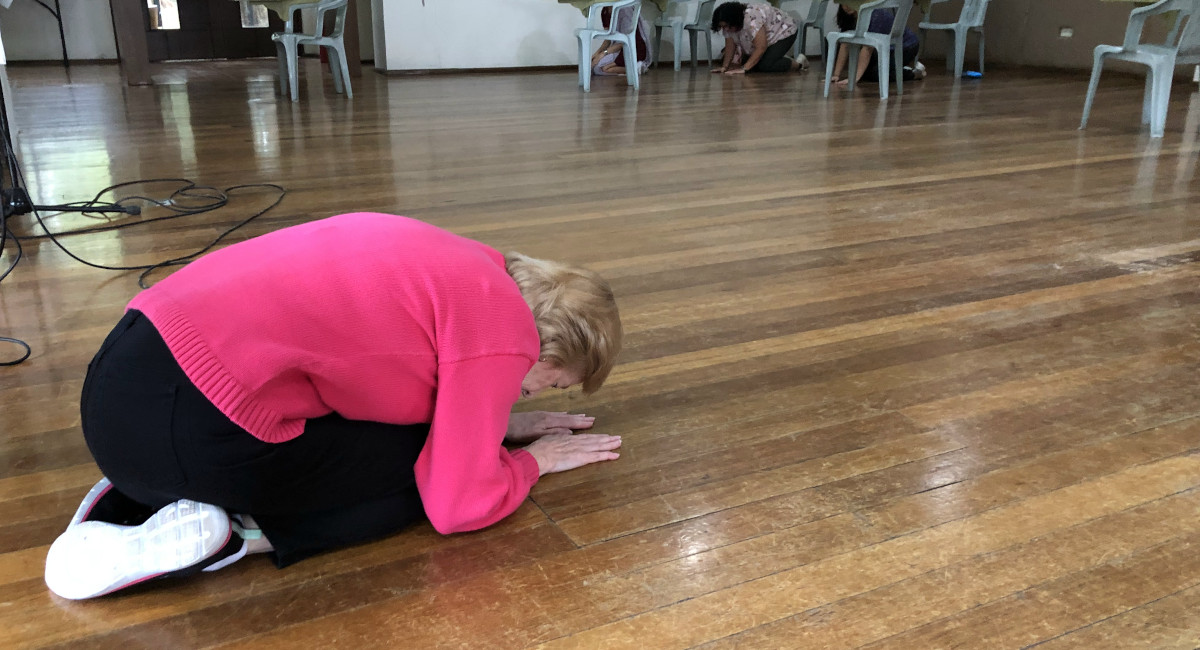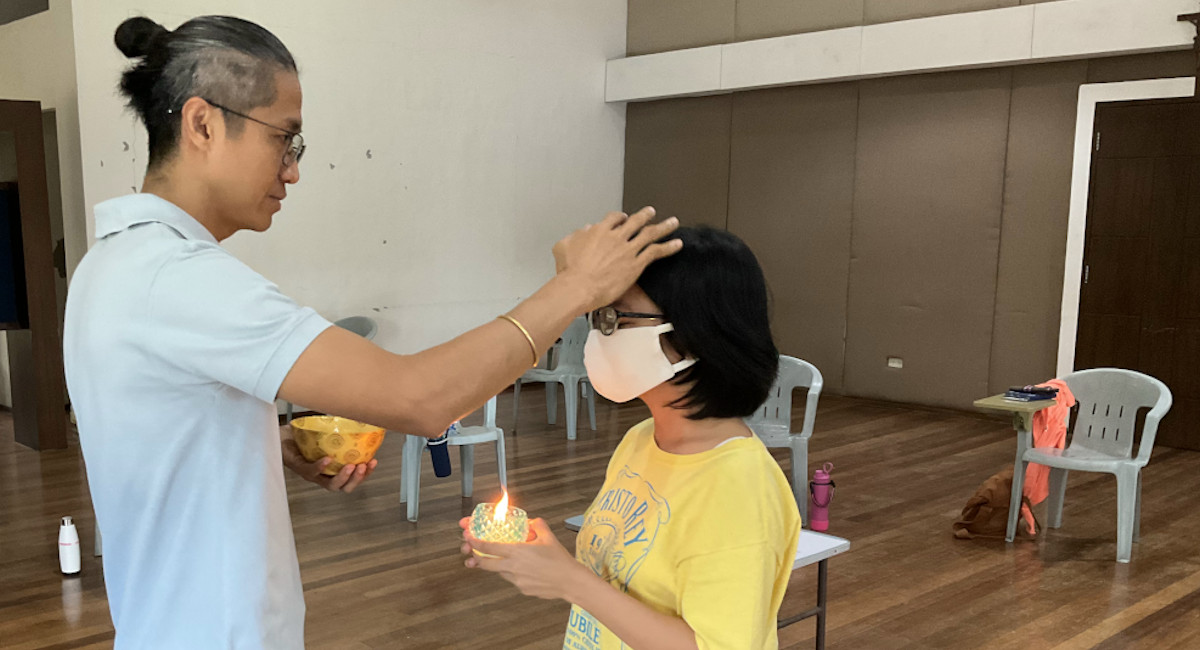 There is no genuine stewardship if it does not start from the stewardship of the self. In fact, it is not a question of “stewardship” from without, as if the human race is apart from the earth. It is rather a “role” we play from within the cosmos. If seen from a non-dual perspective, we are one with the cosmos. Taking care of the earth is taking care of creation of which we are a part.
There is no genuine stewardship if it does not start from the stewardship of the self. In fact, it is not a question of “stewardship” from without, as if the human race is apart from the earth. It is rather a “role” we play from within the cosmos. If seen from a non-dual perspective, we are one with the cosmos. Taking care of the earth is taking care of creation of which we are a part.
It is along this trajectory that Sacred Springs: Dialogue Institute of Spirituality and Sustainability of the Loyola School of Theology held the first Laudato sí Integral Faith Ecology (LIFE) retreat from 7 to 12 January at the Sacred Heart Retreat House in Quezon City. There were eight participants–all women–from Ateneo de Naga University, Jesuit Conference of Asia Pacific, Sisters of St John the Baptist, and the Loyola School of Theology.
The flow of the retreat centered on the theme, “The Spiritual Path of ‘Oneing’” inspired by Julian of Norwich’s idea of oneing to describe divine union. It was a holistic personal retreat with God, Sister Earth, self, and neighbours with daily guided reflections and spiritual accompaniment by Dr Pinky Valdés, Fr Jojo Fung SJ, and Fr Jose Mari Manzano SJ.
 Dr Valdés opened the retreat by stating a reality often forgotten. Christians believe that their first duty is to love God. However, this is not possible until we embrace the truth that we do not need to “deserve” God’s love. God’s love is unconditional regardless of who or what we are: “I have loved you with an everlasting love…” (Jer 31:3). The basic awareness that God loved us first is the fountain of a healthy state of mind and spirit. She helped the participants to gain this vital skill of mental awareness and clarity through the Ignatian consciousness examen.
Dr Valdés opened the retreat by stating a reality often forgotten. Christians believe that their first duty is to love God. However, this is not possible until we embrace the truth that we do not need to “deserve” God’s love. God’s love is unconditional regardless of who or what we are: “I have loved you with an everlasting love…” (Jer 31:3). The basic awareness that God loved us first is the fountain of a healthy state of mind and spirit. She helped the participants to gain this vital skill of mental awareness and clarity through the Ignatian consciousness examen.
The unique setting of the retreat house amidst avenues of towering trees almost a century old became a sacred oasis for deep personal and spiritual dialogue. Pope Francis encourages everyone to make the consciousness examen a habit: “Those who contemplate in this way experience wonder not only at what they see, but also because they feel they are an integral part of this beauty; and they also feel called to guard it and to protect it.”
Contemplation as a long, loving look is an extremely important skill and devotion to cultivate. It is the rich soil in which ecological conversion can grow and be sustained. Every soil needs preparation by allowing the busy mind to settle down through quiet reconnecting with nature and disconnecting from the too fast-paced world. Those who imbued with naturalistic intelligence are often particularly sensitive to mental overload and become drawn towards nature as a way to restore a calm, clear, and creative state of mind.
One of the highlights of the experience was “The Journey of Six Sacred Steps” which brought forth a consciousness in each retreatant of all acts of cruelty mostly due to entanglement with their false-self. Through the exercise, the group was led to a deep sense of gratitude, of forgiveness, of reconciliation with, and acceptance of their true-selves. This true-self is a specific incarnation of divinity that each one is to live and develop. “Every act of cruelty towards any creature is contrary to human dignity” says Pope Francis in Laudato sí, and that includes self-inflicted cruelty. Dr Valdés drew attention to the image of the earth to which the retreatants reconnected through reverential bowing gestures in six stages or steps.
 In the second part of the retreat, Fr Manzano used the image of water in baptism. The Baptism of the Lord in the Jordan is the first of three ways of baptism or ritual washing in God’s divine plan, he explained. The first way is not only the usual view of baptism that binds us or makes us belong to the kingdom of God. When Jesus answered Nicodemus, “No one can enter the kingdom of God unless he is born of water and the Spirit”, he was pointing to a baptism that “births” and brings human beings forth “of water and of the Spirit”. God allowed John the Baptist to immerse God’s entire being into the water in Jesus Christ Himself who came to us in the flesh and not of the flesh, hence, no washing was necessary for Him.
In the second part of the retreat, Fr Manzano used the image of water in baptism. The Baptism of the Lord in the Jordan is the first of three ways of baptism or ritual washing in God’s divine plan, he explained. The first way is not only the usual view of baptism that binds us or makes us belong to the kingdom of God. When Jesus answered Nicodemus, “No one can enter the kingdom of God unless he is born of water and the Spirit”, he was pointing to a baptism that “births” and brings human beings forth “of water and of the Spirit”. God allowed John the Baptist to immerse God’s entire being into the water in Jesus Christ Himself who came to us in the flesh and not of the flesh, hence, no washing was necessary for Him.
One of the important skills in every Ignatian retreat is the application of the senses to deepen one’s sensory awareness. A retreatant, after she was guided through a contemplation accompanied by water, said that water with its trickling sound will no longer be the same to her eyes, to her ears, to her taste, and to her touch.
The second way of baptism goes back to the beginning of creation in the Book of Genesis. As formless element, water is one of the first to be created (Gen 1:1-3). It is the element, symbol, or sacrament of life. The Creator God is a living God who brings forth life. The God of the Israelites even had a first name replete with life. His name means the One Who Is, the I AM, the Beginning and the End, implying that God includes all that can be.
The third way of baptism is Jesus’ act of washing the feet of his disciples. It is the greatest act of tenderness among all and through all times. It is an action of lowering oneself to the ground, bending, kissing not the forehead or cheeks or lips or hands but the feet. It is an entirely new act of not just hovering or spiralling above the waters but a drawing close—the closest that a person can be—embodying, stirring, touching, bending, wiping, kissing, shedding, overflowing.
 In the third and final part, Fr Fung used the image of “spirit” or rûah to lead the participants in a guided contemplation in the fields under the trees. Focusing on the fourth week of the Spiritual Exercises on the Contemplation To Attain Love, the retreatants reflected on “how God dwells in creatures: in the elements giving them existence, in the plants giving them life, in the animals conferring upon them sensation, in humans bestowing them understanding.” And how “God who dwells in me and gives me being, life, sensation, intelligence… makes a temple of me, since I am created in the likeness and image of the Divine Majesty” (SE 235).
In the third and final part, Fr Fung used the image of “spirit” or rûah to lead the participants in a guided contemplation in the fields under the trees. Focusing on the fourth week of the Spiritual Exercises on the Contemplation To Attain Love, the retreatants reflected on “how God dwells in creatures: in the elements giving them existence, in the plants giving them life, in the animals conferring upon them sensation, in humans bestowing them understanding.” And how “God who dwells in me and gives me being, life, sensation, intelligence… makes a temple of me, since I am created in the likeness and image of the Divine Majesty” (SE 235).
The guided contemplation was an experience of God’s omnipresence in the cosmos, in the plural galaxies, milky ways, the stars and planets, and on earth, in the birds, the sheep, the trees, the plants and flowers, the blue sky and the clouds. At the same time, it was about drawing closer to the struggles of Mother/Sister Earth to love her and grieve with her. A participant expressed how she felt more reconnected to the world around her.
For everyone on the retreat, the experience of interconnectivity and oneing enabled them to draw healing from the sun and the earth, and relate to all lifeforms with reverence. This deep sense of oneing capacitated them to be more sensitive to the cries of the earth and the poor. “The human being is the only one who can destroy and disrespect nature among all created beings,” mused one participant. “Yet the earth can well exist without us!”
On the last day, there was an early morning liturgy of missioning in the open for each to offer themselves through the symbol of flowers to the Blessed Virgin Mary, the true model of what it is to work and labour with God. Afterwards, the group went on a short excursion to the La Mesa dam plant nursery and eco-park, where they were each given a tree seedling to adopt and grow.
The success of the retreat has inspired the team to continue giving it at the beginning of each year at the Sacred Heart Retreat House for all those courageous and magnanimous enough to encounter the Triune God in creation. [Sacred Springs: Institute of Dialogue and Spirituality]

